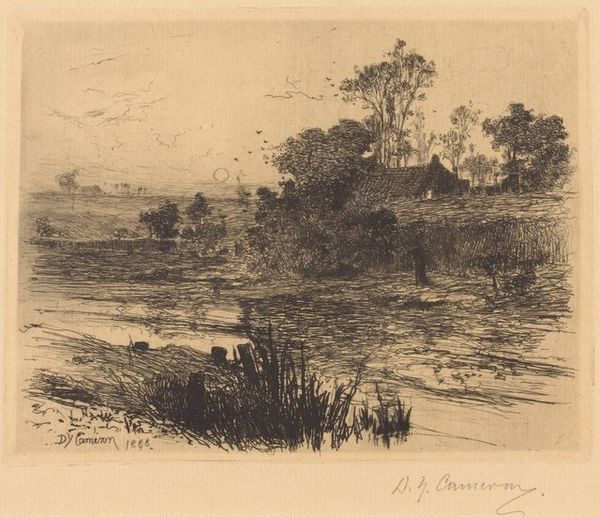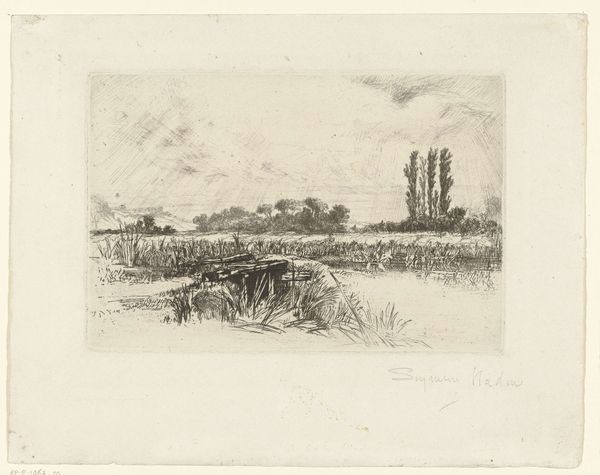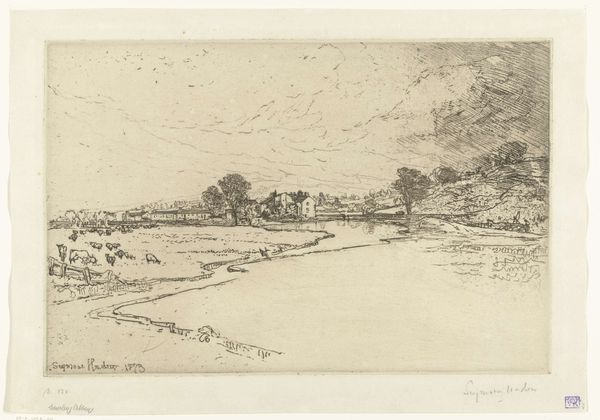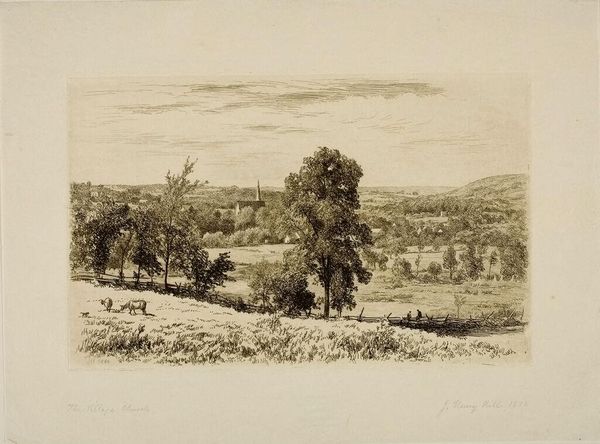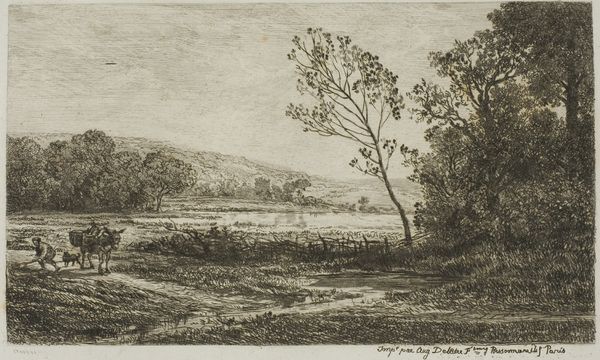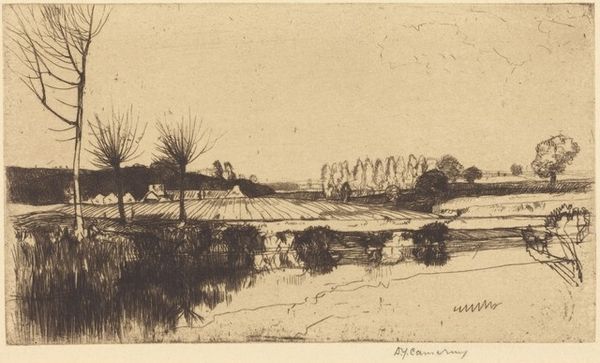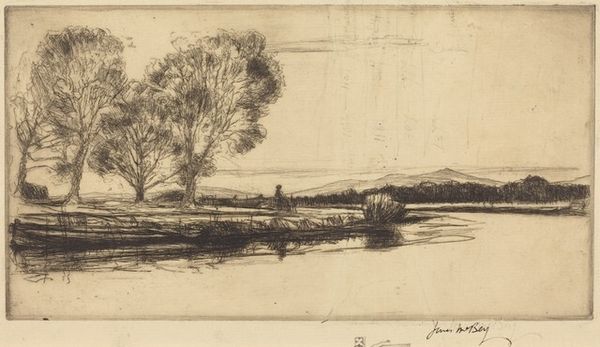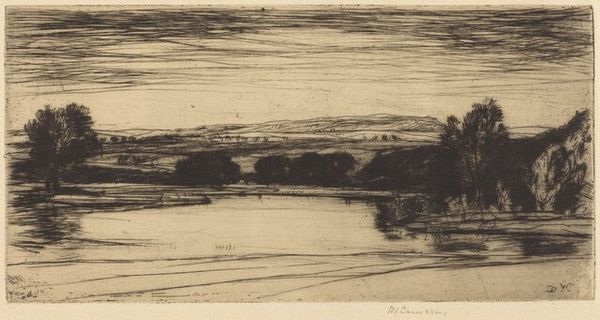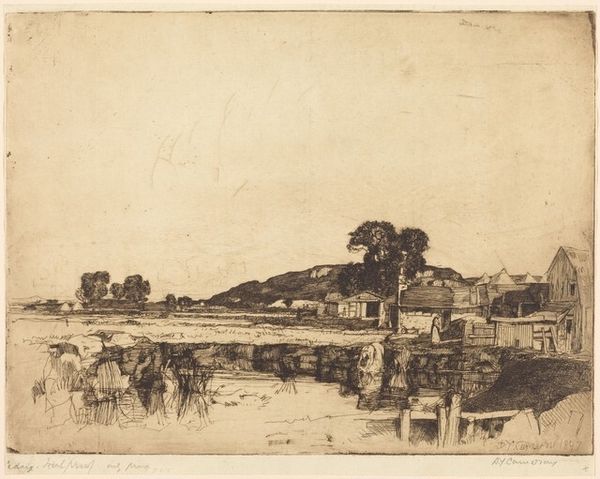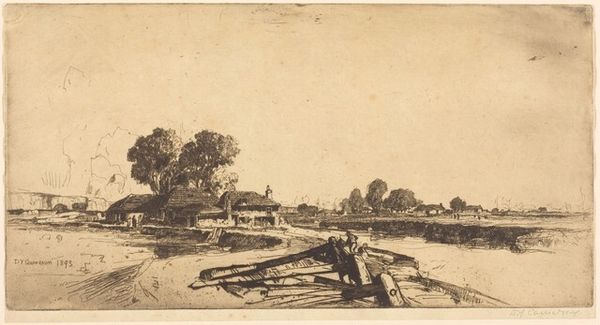
Copyright: National Gallery of Art: CC0 1.0
Editor: This is David Young Cameron's "The Clyde at Symington," created in 1889, using etching and engraving techniques. I'm really struck by how delicate and serene the scene feels, almost dreamlike. What aspects of its construction particularly stand out to you? Curator: The composition offers several interesting points for analysis. Notice first the distinct horizontal layering—the foreground, the river with its reflections, the distant hills. Cameron manipulates tonal values meticulously. The foreground is more detailed with heavier etching, guiding the viewer’s eye towards the lighter, more diffused background. How do you perceive the function of line in creating depth here? Editor: Well, the lines seem denser in the foreground, especially with the reeds and the path, making them feel closer and more tangible. In contrast, the background is softer, with fewer lines, suggesting distance. Curator: Precisely. Moreover, the artist employs what might be considered a "classical" compositional structure, anchoring the scene with strong verticals - those trees to the right - that balance the horizontality we observed. This balance contributes significantly to the sense of tranquility you initially observed. Note also how the etching captures different textures: the smooth water versus the rough foliage. These variations articulate different spatial planes. Editor: It’s fascinating how the limited tonal range still conveys so much depth and texture. Did this etching technique lend itself well to capturing landscape at the time? Curator: Indeed. Etching allowed for a high level of detail and nuanced gradations in tone, favored by many artists pursuing realism and naturalism. Consider, also, the expressiveness inherent in the artist's hand evident in the mark-making; the composition becomes a study in structured expressivity, where nature is meticulously transcribed rather than faithfully replicated. It underscores the artwork's adherence to formal structures while celebrating the material specificity of the medium itself. Editor: I see what you mean. I initially focused on the overall mood, but analyzing the formal elements reveals the strategic choices that create that effect. Curator: By examining these formal decisions, we begin to appreciate how visual effects translate to the sensory experience.
Comments
No comments
Be the first to comment and join the conversation on the ultimate creative platform.
